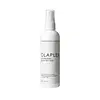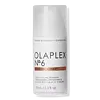What's inside
What's inside
 Key Ingredients
Key Ingredients

 Benefits
Benefits

 Concerns
Concerns

 Ingredients Side-by-side
Ingredients Side-by-side

Water
Skin ConditioningPhyllostachys Bambusoides Extract
Skin ConditioningPisum Sativum Peptide
Skin ConditioningMaltodextrin
AbsorbentMaltodextrin/Vp Copolymer
Pvp
Emulsion StabilisingPolysorbate 20
EmulsifyingParfum
MaskingArtocarpus Heterophyllus Fruit Extract
Skin ConditioningSodium Benzoate
MaskingBis-Aminopropyl Diglycol Dimaleate
Skin ConditioningSodium Metabisulfite
AntioxidantPotassium Sorbate
PreservativeSodium Phytate
Leuconostoc/Radish Root Ferment Filtrate
AntimicrobialLactobacillus Ferment
Skin ConditioningEthylhexylglycerin
Skin ConditioningPhenoxyethanol
PreservativeHexyl Cinnamal
PerfumingLimonene
PerfumingCitral
PerfumingLinalool
PerfumingCitronellol
PerfumingWater, Phyllostachys Bambusoides Extract, Pisum Sativum Peptide, Maltodextrin, Maltodextrin/Vp Copolymer, Pvp, Polysorbate 20, Parfum, Artocarpus Heterophyllus Fruit Extract, Sodium Benzoate, Bis-Aminopropyl Diglycol Dimaleate, Sodium Metabisulfite, Potassium Sorbate, Sodium Phytate, Leuconostoc/Radish Root Ferment Filtrate, Lactobacillus Ferment, Ethylhexylglycerin, Phenoxyethanol, Hexyl Cinnamal, Limonene, Citral, Linalool, Citronellol
Water
Skin ConditioningCetearyl Alcohol
EmollientDimethicone
EmollientIsohexadecane
EmollientCoco-Caprylate
EmollientNeopentyl Glycol Diheptanoate
EmollientBehentrimonium Chloride
PreservativeIsododecane
EmollientPhenyl Trimethicone
Skin ConditioningPropanediol
SolventBis-Aminopropyl Diglycol Dimaleate
Skin ConditioningParfum
MaskingCetrimonium Chloride
AntimicrobialPhenoxyethanol
PreservativeGlyceryl Stearate
EmollientIsopropyl Alcohol
SolventHydroxyethylcellulose
Emulsion StabilisingHydroxypropyl Guar
Emulsion StabilisingSodium Stearoyl Lactylate
EmulsifyingHydroxypropyl Cyclodextrin
MaskingHexyl Cinnamal
PerfumingLimonene
PerfumingCitral
PerfumingHydrolyzed Vegetable Protein Pg-Propyl Silanetriol
Skin ConditioningDisodium EDTA
Linalool
PerfumingCitronellol
PerfumingIodopropynyl Butylcarbamate
PreservativeHydroxycitronellal
PerfumingEtidronic Acid
Tocopherol
AntioxidantGeraniol
PerfumingPotassium Sorbate
PreservativeHelianthus Annuus Seed Oil
EmollientPhytantriol
HumectantSodium Benzoate
MaskingPseudozyma Epicola/Camellia Sinensis Seed Oil Ferment Extract Filtrate
HumectantTocopheryl Acetate
AntioxidantVitis Vinifera Seed Oil
EmollientAloe Barbadensis Leaf Juice
Skin ConditioningPanthenol
Skin ConditioningCitric Acid
BufferingGigartina Stellata Extract
Skin ProtectingChondrus Crispus Extract
Skin ConditioningAscorbic Acid
AntioxidantCocos Nucifera Oil
MaskingWater, Cetearyl Alcohol, Dimethicone, Isohexadecane, Coco-Caprylate, Neopentyl Glycol Diheptanoate, Behentrimonium Chloride, Isododecane, Phenyl Trimethicone, Propanediol, Bis-Aminopropyl Diglycol Dimaleate, Parfum, Cetrimonium Chloride, Phenoxyethanol, Glyceryl Stearate, Isopropyl Alcohol, Hydroxyethylcellulose, Hydroxypropyl Guar, Sodium Stearoyl Lactylate, Hydroxypropyl Cyclodextrin, Hexyl Cinnamal, Limonene, Citral, Hydrolyzed Vegetable Protein Pg-Propyl Silanetriol, Disodium EDTA, Linalool, Citronellol, Iodopropynyl Butylcarbamate, Hydroxycitronellal, Etidronic Acid, Tocopherol, Geraniol, Potassium Sorbate, Helianthus Annuus Seed Oil, Phytantriol, Sodium Benzoate, Pseudozyma Epicola/Camellia Sinensis Seed Oil Ferment Extract Filtrate, Tocopheryl Acetate, Vitis Vinifera Seed Oil, Aloe Barbadensis Leaf Juice, Panthenol, Citric Acid, Gigartina Stellata Extract, Chondrus Crispus Extract, Ascorbic Acid, Cocos Nucifera Oil
 Reviews
Reviews

Ingredients Explained
These ingredients are found in both products.
Ingredients higher up in an ingredient list are typically present in a larger amount.
We don't have a description for Bis-Aminopropyl Diglycol Dimaleate yet.
Citral is a fragrance and used to add a lemon-like scent to products. It is both naturally found in plants and created synthetically. In plants, it is commonly occurring in lemon myrtle, lemongrass, lemon tea-tree, lemon verbena, and other citruses.
The EU mandates Citral be listed separately as a fragrance. It is a known allergen and may cause contact dermatitis. Citral can also used as a masking ingredient.
The term 'fragrance' is not regulated in many countries. In many cases, it is up to the brand to define this term. For instance, many brands choose to label themselves as "fragrance-free" because they are not using synthetic fragrances. However, their products may still contain ingredients such as essential oils that are considered a fragrance.
The term 'citral' is a collective term for two geometric isomers: geranial/Citral A and neral/Citral B.
Learn more about CitralCitronellol is used to add fragrance/parfum to a product. It is often derived from plants such as roses. In fact, it can be found in many essential oils including geranium, lavender, neroli, and more. The scent of Citronellol is often described as "fresh, grassy, and citrus-like".
Since the Citronellol molecule is already unstable, Citronellol becomes irritating on the skin when exposed to air.
Citronellol is a modified terpene. Terpenes are unsaturated hydrocarbons found in plants. They make up the primary part of essential oils.
Citronellol is not able to be absorbed into deeper layers of the skin. It has low permeability,
Citronellol is also a natural insect repellent.
Learn more about CitronellolHexyl Cinnamal is a fragrance ingredient with a similar scent to jasmine. It can be naturally found in chamomile essential oil.
This ingredient is a known EU allergen and may sensitize the skin. The EU requires this ingredient to be listed separately on an ingredients list.
Hexyl Cinnamal is not water soluble but is soluble in oils.
Learn more about Hexyl CinnamalLimonene is a fragrance that adds scent and taste to a formulation.
It's found in the peel oil of citrus fruits and other plants such as lavender and eucalyptus. The scent of limonene is generally described as "sweet citrus".
Limonene acts as an antioxidant, meaning it helps neutralize free radicals.
When exposed to air, oxidized limonene may sensitize the skin. Because of this, limonene is often avoided by people with sensitive skin.
The term 'fragrance' is not regulated in many countries. In many cases, it is up to the brand to define this term. For instance, many brands choose to label themselves as "fragrance-free" because they are not using synthetic fragrances. However, their products may still contain ingredients such as essential oils that are considered a fragrance.
Learn more about LimoneneLinalool is a fragrance and helps add scent to products. It's derived from common plants such as cinnamon, mint, citrus, and lavender.
Like Limonene, this ingredient oxidizes when exposed to air. Oxidized linalool can cause allergies and skin sensitivity.
This ingredient has a scent that is floral, spicy tropical, and citrus-like.
Learn more about LinaloolParfum is a catch-all term for an ingredient or more that is used to give a scent to products.
Also called "fragrance", this ingredient can be a blend of hundreds of chemicals or plant oils. This means every product with "fragrance" or "parfum" in the ingredients list is a different mixture.
For instance, Habanolide is a proprietary trade name for a specific aroma chemical. When used as a fragrance ingredient in cosmetics, most aroma chemicals fall under the broad labeling category of “FRAGRANCE” or “PARFUM” according to EU and US regulations.
The term 'parfum' or 'fragrance' is not regulated in many countries. In many cases, it is up to the brand to define this term.
For instance, many brands choose to label themselves as "fragrance-free" because they are not using synthetic fragrances. However, their products may still contain ingredients such as essential oils that are considered a fragrance by INCI standards.
One example is Calendula flower extract. Calendula is an essential oil that still imparts a scent or 'fragrance'.
Depending on the blend, the ingredients in the mixture can cause allergies and sensitivities on the skin. Some ingredients that are known EU allergens include linalool and citronellol.
Parfum can also be used to mask or cover an unpleasant scent.
The bottom line is: not all fragrances/parfum/ingredients are created equally. If you are worried about fragrances, we recommend taking a closer look at an ingredient. And of course, we always recommend speaking with a professional.
Learn more about ParfumPhenoxyethanol is a preservative that has germicide, antimicrobial, and aromatic properties. Studies show that phenoxyethanol can prevent microbial growth. By itself, it has a scent that is similar to that of a rose.
It's often used in formulations along with Caprylyl Glycol to preserve the shelf life of products.
Potassium Sorbate is a preservative used to prevent yeast and mold in products. It is commonly found in both cosmetic and food products.
This ingredient comes from potassium salt derived from sorbic acid. Sorbic acid is a natural antibiotic and effective against fungus.
Both potassium sorbate and sorbic acid can be found in baked goods, cheeses, dried meats, dried fruit, ice cream, pickles, wine, yogurt, and more.
You'll often find this ingredient used with other preservatives.
Learn more about Potassium SorbateSodium Benzoate is a preservative. It's used in both cosmetic and food products to inhibit the growth of mold and bacteria. It is typically produced synthetically.
Both the US FDA and EU Health Committee have approved the use of sodium benzoate. In the US, levels of 0.1% (of the total product) are allowed.
Sodium benzoate works as a preservative by inhibiting the growth of bacteria inside of cells. It prevents the cell from fermenting a type of sugar using an enzyme called phosphofructokinase.
It is the salt of benzoic acid. Foods containing sodium benzoate include soda, salad dressings, condiments, fruit juices, wines, and snack foods.
Studies for using ascorbic acid and sodium benzoate in cosmetics are lacking, especially in skincare routines with multiple steps.
We always recommend speaking with a professional, such as a dermatologist, if you have any concerns.
Learn more about Sodium BenzoateWater. It's the most common cosmetic ingredient of all. You'll usually see it at the top of ingredient lists, meaning that it makes up the largest part of the product.
So why is it so popular? Water most often acts as a solvent - this means that it helps dissolve other ingredients into the formulation.
You'll also recognize water as that liquid we all need to stay alive. If you see this, drink a glass of water. Stay hydrated!
Learn more about Water